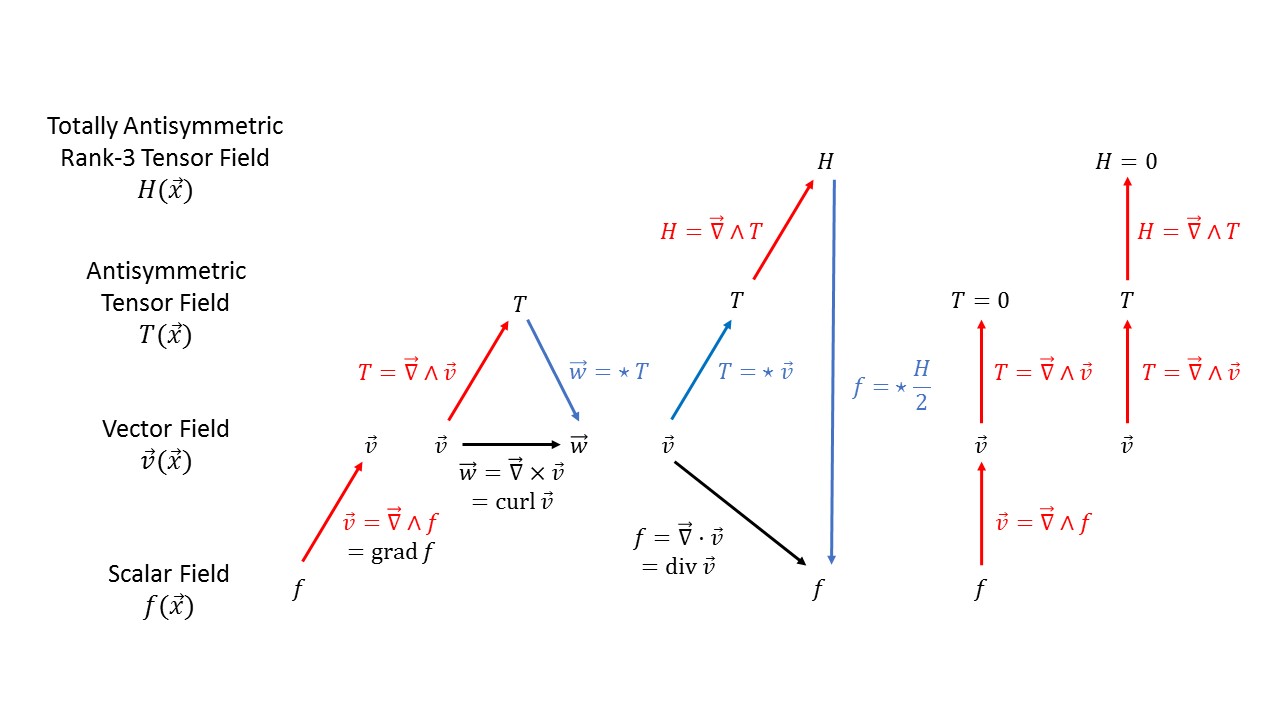Add a new page:
The exterior derivative generalizes the curl operator from 3-dimensional space to any number of dimensions.
The exterior derivative of a vector field $v$ can be written as $\nabla \wedge v$, where the $\wedge$ indicates the exterior product. This is analogous to how we can write the curl as $\nabla \times v$, where $\times$ is the cross product, and the divergence as $\nabla \cdot v$, where $\cdot$ is the dot product.
The curl operator in 3D is the Hodge dual of the exterior derivative: ${\rm curl}(v) = \star(\nabla \wedge v)$.
The exterior derivative of a $p$-form $\omega$ is usually written as $d\omega$.
Taking the exterior derivative of any object twice results in zero: $d^2\omega=0$. This is an important result with many implications including for electrodynamics and topology.
The diagram shows on the left-hand side how the gradient, curl, and divergence operators know from 3D can be constructed from the exterior derivative and the Hodge dual. The right-hand side illustrates the fact that taking the exterior derivative twice results in zero.
For a more detailed explanation of this picture see Fun with Symmetry.
